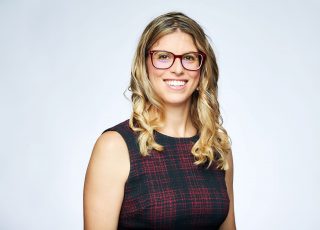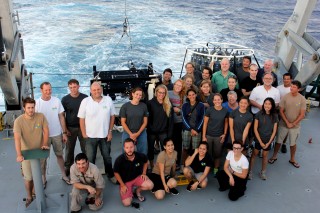
Our time on the R/V Falkor is nearly finished, the last samples have been collected, our equipment has been washed and dried in the afternoon sun, and the pace of work on the ship has slowed.
The scientists have transitioned from the busy, physical work of deploying and recovering the CTD-Rosette, MOCNESS and ring net to the gentle rhythms of sorting samples at the microscope on the swaying ship.
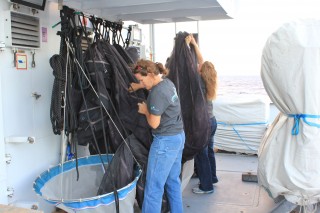
Our blog entries this week have given a glimpse into each of the various projects that were conducted on this cruise. Perhaps by now you are a bit more familiar with plankton, the wide variety of organisms that drift through the oceans’ waters. Many of the students on this last student cruise of 2014 belong to the marine zooplankton lab at the University of Hawaii at Manoa, and focus on the study of zooplankton, the animal subset of plankton, “those ocean drifters”. What this really means is that for the past six days, the opportunity to sail with the R/V Falkor and collect samples for study at Station ALOHA has been the chance of a lifetime. The excitement has been infections, as students chat with crew about the various findings from the MOCNESS nets. Giddy with the rush of being at sea and eager to work around the clock on identifying and sorting the organisms in our “plankton zoo”. Perhaps Karen has convinced you to thank the lawnmowers of the sea for that breath of fresh air, or Lauren’s discussion of copepod paternity has made you ponder how the business of mating and reproduction happens for tiny organisms living in a vast, 3-D ocean environment.
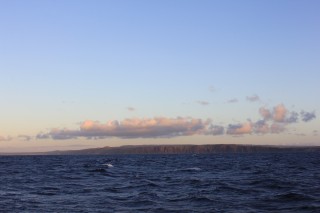
To top it all off, Carlie Wiener hosted the All Things Marine Radio Show live and broadcasted onboard the Falkor. The show focused on the zooplankton research that had happened over the past week, and graduate students Astrid Leitner, Lauren von Woudenburg, Michelle Jungbluth got to participate. Carlie also interviewed postdoctroal fellow Kate Hanson and chief scientists Erica Goetze.
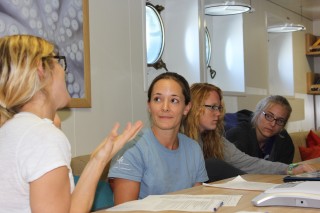
This has been a productive expedition with five MOCNESS deployment and retrievals, 20 ring net tows, 4 CTD Rosette deployments, and the ocean floor mapping of the Kaiwi Channel . After a busy and productive week the results of this cruise to Station Aloha will be transferred to the labs back at the University of Hawaii for further analysis. Some of the samples and results will even be used for several student’s dissertation projects and for other new research. However, before the scientists get down to work, they might need a night of sleep or two. After all, they just spent a week on board the R/V Falkor dancing with those ocean drifters, zooplankton.
